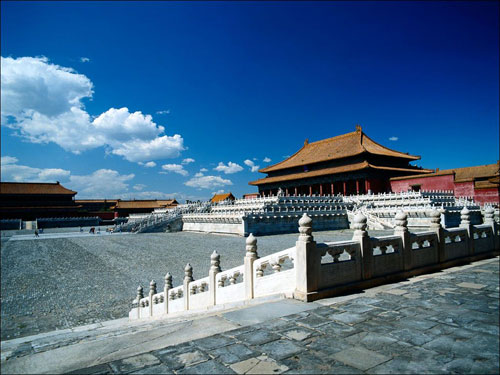
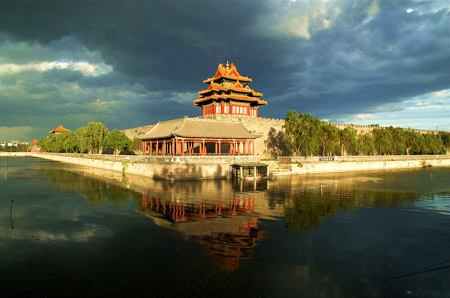
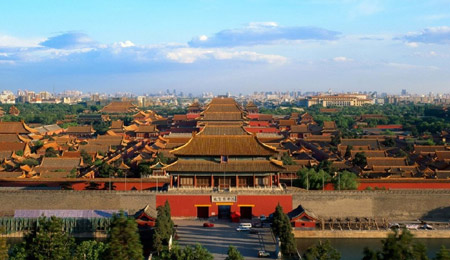
The view of the Forbidden City from Jingshan Park
The forbidden city: beyond time and space
After 1421, Beijing became China's capital, and the Forbidden City, containing a group of imperial buildings, remains a remarkable achievement. Around its main courtyard and many smaller courts are grouped splendid halls, galleries, terraces, and gateways. White marble, wall facings of glazed terra-cotta, roofs of glazed and colored tiles, and woodwork finished with paint, lacquer, and gilding all united to create an effect of exceptional richness. The Forbidden City, located in the center of the central north-south axis in Beijing, is surrounded by 10-metre high walls and a 52-metre wide moat. Measuring 961 meters from north to south and 753 meters from east to west, it covers an area of 720,000 square meters. The Forbidden City has four gates, the Meridian Gate (Wu Men) in the south and the Gate of Spiritual Valor (Shenwu Men) in the north being used as the entrance and exit by tourists today.
The entire compound is composed of two parts: the southern section “Outer Court,” where the three great ceremonial halls—Taihedian (Hall of Supreme Harmony), Zhonghedian (Hall of Central Harmony), and Baohedian (Hall of Preserving Harmony) and many smaller structures are located and the emperors held court and conducted grand audiences, and the northern section “Inner Court,” containing the residential quarters of the Qing emperors, their consorts, concubines, and children, as well as innumerable servants.
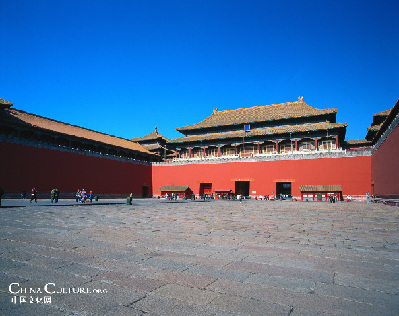
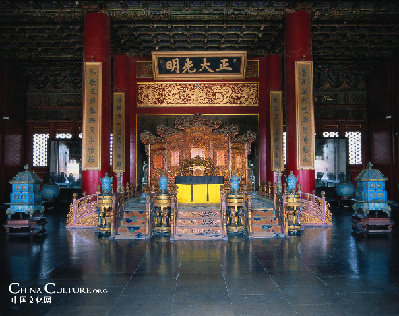
Entering from the Meridian Gate, one encounters a large square, pierced by the meandering Inner Golden Water River, which is crossed by five bridges. Beyond the square stands the Gate of Supreme Harmony. Behind that is the Hall of Supreme Harmony Square. A three-tiered white marble terrace rises from this square. Three halls stand on top of this terrace, the focus of the palace complex. From the south, these are the Hall of Supreme Harmony, the Hall of Central Harmony, and the Hall of Preserving Harmony.
The Hall of Supreme Harmony is the largest, and rises some 30 meters above the level of the surrounding square. It is the ceremonial centre of imperial power, and the largest surviving wooden structure in China. In the Ming Dynasty, the Emperor held court here to discuss affairs of state. During the Qing Dynasty, as Emperors held court far more frequently, a less ceremonious location was used instead, and the Hall of Supreme Harmony was only used for ceremonial purposes, such as coronations, investitures, and imperial weddings.